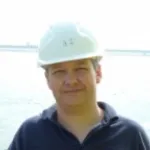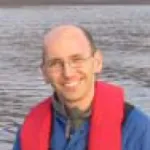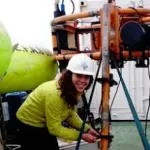BLUEcoast aims to inform coastal management by reducing uncertainties in the prediction of medium-term (years) and long-term (decadal and longer) regional sediment budgets, morphological change and how the coast recovers after sequences of storms.
Key questions are:
- What is the role of sediment type (grain size, cohesiveness, lithology, biological characteristic) and coastal geomorphology on mediating coastal evolution?
- Which processes dictate the crossshore and/or alongshore sediment fluxes of sediment from source to sink?
- What role is played by biotic factors in the ecosystem and to what extend do biotic processes mediate coastal change or stability?
- Which processes govern the recovery period of coastal systems?
- What role is played by local and antecedent conditions?
- How sensitive are coastal systems to changes in external forcings, including the sequencing and frequency and magnitude of extreme events, and including the confounding effect of human interventions?
- How do biological and sedimentary factors combine to determine the resilience and tipping point of the system?
- By engaging with key coastal practitioners, plans have been established to enable our new understanding to directly inform the update of guidance documents on model application for coastal management purposes.
Modelling research approach
Download these modelling outputs and find out what the project is producing.
Coastal ME – coastal modelling environment (pdf)
COVE – coastal one-line vector evolution model (pdf)
CSHORE – cross-shore numerical model (pdf)
Delft3D – coastal area model (pdf)
FVCOM – unstructured grid finite volume community ocean model (pdf)
XBeach – storm impact modelling on sandy beaches (pdf)
XBeach-G – storm impact modelling on gravel beaches (pdf)
Observational research approach
Download these observational outputs and find out more about the project
Shoreline observations monitoring dune response and recovery (pdf)
Flume based observations of marsh dynamics (pdf)
Process studies for improving regional modelling (pdf)
Radar based nearshore morphological monitoring (pdf)
Salt marsh dynamics field observations (pdf)
Observational research on sandy and gravel beaches (pdf)
Data archive
Download our data managment information sheet
Bilson, O., Russell, P., Davidson, M. (2019) Storm waves at the shoreline: when and where are infragravity waves important, Journal of Marine Science and Engineering, 7(5), 139, 21pp. [WP1]
Brooks, S., Spencer, T. (2017) Storm impacts on cliffed coastlines. In: Ciavola, P. and Coco, G. (Eds.), Coastal Storms: Processes and Impacts. J.Wiley & Sons Ltd., Chichester, 99-125. [WP2]
Brooks, S., Spencer, T., Christie, E. (2017) Storm impacts and shoreline recovery: Mechanisms and controls in the southern North Sea, Geomorphology, 283, 48-60. [WP2, WP3]
Brooks, H., Möller, I., Carr, S., Chirol, C., Christie, E., Evans, B., Spencer, K.L., Spencer, T., Royse, K. (2020) Resistance of salt marsh substrates to near-instantaneous hydrodynamic forcing. Earth Surface Processes and Landforms, doi:10.1002/esp.4912. [WP3]
Brooks, S. (2020) Disappearing Beaches. Nature Climate Change News and Views, 10, 188–190. [WP2]
Brown, J, Morrisey, K., Knight, P., Prime, T., Almeida, L., Masselink, G., Bird, C., Dodds, D., Plater, A. (2018) A coastal vulnerability assessment for planning climate resilient infrastructure. Ocean and Coastal Management, 163, 101-112. [WP1, WP4]
Brown, J., Phelps, J., Barkwith, A., Hurst, M., Ellis, M., Plater, A. (2016) The effectiveness of beach mega-nourishment, assessed over three management epochs, Journal of Environmental Management, 184(2), 400-408. [WP2, WP4]
Burvingt, O., Masselink, G., Russell, P., Scott, T. (2017) Classification of beach response to extreme storms. Geomorphology, 295, 722-737. [WP1]
Burvingt, O. Masselink, G., Scott, T, Russell, P., Davidson, M. (2018) Climate forcing of regionally-coherent extreme storm impact and recovery on embayed beaches. Marine Geology, 401, 112-128. [WP1]
Castelle, B., Dodet, G., Masselink, G., Scott, T. (2017) A new climate index based on sea-level pressure gradient between Ireland and Spain controlling winter wave activity along the Atlantic coast of Europe: the West Europe Pressure Anomaly. Geophysical Research Letters. [WP1]
Castelle, B., Dodet, G., Masselink, G., Scott, T. (2018) Increased winter-mean wave height, variability and periodicity in the North-East Atlantic over 1949-2017. Geophysical Research Letters, 45, 3586-3596. [WP1]
Chen, X., Zhang, C., Paterson, D., Townend, I. (2018) The effect of cyclic variation of shear stress on non-cohesive sediment stabilization by microbial biofilms: The role of “biofilm precursors”. Earth Surface Processes and Landforms, doi 10.1002/esp.4573. [WP3]
Christie, E., Spencer, T., Pollard, J., Brooks, S., Palaima, A. (2020) Evaluating the viability of coastal wet grassland to a changing management regime through flood hazard modelling. Ecological Engineering, 158. [WP3]
Cooper, J., Masselink, G., Coco, G., Short, A., Castelle, B., Rogers, K., Anthony, E., Green, A., Kelley, J., Pilkey, O., Jackson, D. (2020) Sandy beaches can survive sea-level rise. Nature Climate Change, 10, 993–995. [WP1]
Davidson, M., Turner, I., Splinter, K., Harley, M. (2017) Annual prediction of shoreline erosion and subsequent recovery. Coastal Engineering, 130, 14-25. [WP1]
Dodet, G., Castelle, B., Masselink, G., Scott, T., Davidson, M., Floc’h, F., Jackson, D., Suanez, S. (2018) Beach recovery from extreme storm activity during the 2013/14 winter along the Atlantic coast of Europe. Earth Surface Processes and Landforms. [WP1]
Evans, B., Möller, I., Spencer, T., Smith, G. (2019) Dynamics of salt marsh margins are related to their three-dimensional functional form, Earth Surface Processes and Landforms 44, 1816-1827. [WP3]
Kiesel, J., Schuerch, M., Christie, E., Möller, I., Spencer, T., Vafeidis, A. (2020) Effective design of managed realignment schemes can reduce coastal flood risks. Estuarine, Coastal Shelf Science, 242, 106844. [WP3]
Kiesel, J., Schuerch, M., Möller, I., Spencer, T., Vafeidis, A. (2019) Attenuation of high water levels over restored saltmarshes can be limited. Insights from Freiston Shore, Lincolnshire, UK, Ecological Engineering, 136, 89-100. [WP3]
King, E., McCarroll, R., Conley, D., Scott, T., Leonardi, N., Masselink, G. (2019) The relative impact of waves and tides on residual sand transport on a sediment-poor, energetic and macrotidal continental shelf, Journal of Geophysical Research (Oceans), 124(7), 29pp. [WP1]
Li, X., Leonardi, N., Plater, A. (2019) Wave-driven sediment resuspension and salt marsh frontal erosion alter the export of sediments from macro-tidal estuaries. Geomorphology, 325, 17-28. [WP4]
Li, X., Leonardi, N., Plater, A. (2020) Impact of barrier breaching on wetland ecosystems under the influence of storm surge, sea-level rise and freshwater discharge. Wetlands, 40, 771-785. [WP4]
Li, X., Leonardi, N., Plater, A. J. (2019). A stochastic approach to modelling creek evolution demonstrating multiple probable creek topologies through ensemble predictions. Geophysical Research Letters, 46 (23), 13836-13844. [WP4]
Li, X., Plater, A.J., Leonardi, N. (2018) Modelling the transport and export of sediments in macro-tidal estuaries with eroding salt marsh. Estuaries and Coasts, 41, 1551-1564. [WP4]
López, P., Payo, A., Ellis, M., Criado-Aldeanueva, F., Jenkins, G. (2020) A Method to Extract Measurable Indicators of Coastal Cliff Erosion from Topographical Cliff and Beach Profiles: Application to North Norfolk and Suffolk, East England, UK, Journal of Marine Science and Engineering, 8(1), 20, 22pp. [WP2]
Masselink, G., Lazarus, E. (2019) Defining Coastal Resilience, Water, 11(2587), 21pp. [WP1]
Masselink, G., Russell, P., Rennie, A., Brooks, S., Spencer, T. (2020) Impacts of climate change on coastal geomorphology and coastal erosion relevant to the coastal and marine environment around the UK. MCCIP Science Review 2020, 158-189. [WP1, WP2, WP3]
McCarroll, R., Masselink, G., Wiggins, M., Scott, T., Billson, O., Conley, D., Valiente, N. (2019) High-efficiency gravel longshore sediment transport and headland bypassing over an extreme wave event, Earth Surface Processes and Landforms, 44(13), 2720–2727. [WP1]
McCarroll, R., Masselink, G., Valiente, N., Scott, T., King, E., Conley, D. (2018) Wave and Tidal Controls on Embayment Circulation and Headland Bypassing for an Exposed, Macrotidal Site. Journal of Marine Science and Engineering, 6(3), 94. [WP1]
McCarroll, R., Masselink, G., Valiente, N., Wiggins, W., Scott, T., Conley, D., King, E. (2020) Impact of a headland-associated offshore sandbank on shoreline dynamics, Geomorphology, 107065. [WP1]
McCarron, C., Van Landeghem, K., Baas, J., Amoudry, L., Malarkey, J. (2019) The hiding-exposure effect revisited: a method to calculate the mobility of bimodal sediment mixtures, Marine Geology, 410, 22-31. [WP3]
Möller, I., Christie, E. (2018) Hydrodynamics and Modeling of Water Flow in Coastal Wetlands. In: Perillo GME, Wolanski E, Cahoon DR, and Hopkinson CS (eds) Coastal Wetlands An Integrated Ecosystem Approach, 2nd edition. pp. 1130. Elsevier B.V. ISBN: 978-0-444-63893-9, Chapter 8, 289-323. [WP3]
Paterson, D., Hope, J., Kenworthy, J., Biles, C., Gerbersdorf, S. (2018) Form, Function and Physics: The ecology of biogenic stabilisation. Journal of Soils and Sediments, 18(10) 3044-3045. [WP3]
Payo, A., Jigena A., Hurst, M., Palaseanu-Lovejoy, M., Williams, C., Jenkins, G., Lee, K., Favis-Mortlock, D., Barkwith, A., Ellis, M.A. (2018) Development of an automatic delineation of cliff top and toe on very irregular planform coastlines (CliffMetrics v1. 0). Geoscientific Model Development, 11(10), pp.4317-4337. [WP2]
Payo, A., Walkden, M., Ellis, M., Barkwith, A., Favis-Mortlock, D., Kessler, H., Wood, B., Burke, H., Lee, J. (2018) A quantitative assessment of the annual contribution of platform downwearing to beach sediment budget: Happisburgh, England, UK. Journal of Marine Science and Engineering, 6(4), p.113. [WP2]
Payo, A., Williams, C., Vernon, R., Hulbert, A., Lee, K., Lee, J. (2020) Geometrical Analysis of the Inland Topography to Assess the Likely Response of Wave-Dominated Coastline to Sea Level: Application to Great Britain. Journal of Marine Science and Engineering, 8, 866. [WP2]
Payo, A., Wallis, H., Ellis, M., Barkwith, A., Poate, T. (2020) Application of portable streamer traps for obtaining point measurements of total longshore sediment transport rates in mixed sand and gravel beaches, Coastal Engineering 156(2020): 103580, 14pp. [WP3]
Pollard, J., Brooks, S., Spencer, T. (2018) The Interactive Relationship between coastal erosion and flood risk. Progress in Physical Geography, August 2018. [WP4]
Pollard, J., Brooks, S., Spencer, T. (2019) Harmonising topographic & remotely sensed datasets, a reference dataset for shoreline and beach change analysis, Scientific Data, 6, 42 [WP2]
Pollard, J., Christie, E., Brooks, S., Spencer, T. (2021) Impact of management regime and regime change on gravel barrier response to a major storm. Journal of Marine Science and Engineering, 9, 147 [WP2]
Pollard J., Spencer, T., Brooks, S., Christie, E., Möller, I. (2020) Understanding spatiotemporal barrier dynamics through the use of multiple shoreline proxies. Geomorphology, 354, 107058. [WP2]
Pollard, J., Spencer, T., Jude, S. (2018) Big data approaches for coastal flood risk assessment and emergency response. WIREs Climate Change 2018 9:e543 [WP4]
Reef, R., Schuerch, M., Christie, E., Möller, I., Spencer, T. (2018) The effect of vegetation height and biomass on the sediment budget of a European saltmarsh. Estuarine, Coastal and Shelf Science, 202, 125-133. [WP3]
Schuerch, M., Spencer, T., Evans, B. (2019) Coupling between tidal mudflats and salt marshes affects marsh morphology, Marine Geology, 412, 95-106. [WP3]
Scott, T., Masselink, G., O’Hare, T., Saulter, A., Poate, T., Russell, P., Davidson, M., Conley, D., Siggory, E. (2016) The extreme 2013/2014 winter storms: coastal response and multi-annual recovery along the southwest coast of England. Marine Geology, 382, 224-241. [WP1]
Serôdio, J., Paterson, D., Méléder, V., Vyverman, W. (2020) Editorial: Advances and Challenges in Microphytobenthos Research: From Cell Biology to Coastal Ecosystem Function. Front. Mar. Sci. 7:608729. [WP3]
Spencer, T., Brooks, S., Pollard, J. (2020) The barrier coastline of North Norfolk, with particular reference to Scolt Head Island. In: Goudie, A., Migon, P. (eds.), Landscapes and Landforms of England and Wales, World Geomorphological Landscapes. Springer Nature, Switzerland, 359-380. [WP2]
Thorne, P., Lichtman, I., Hurther, D. (2020) Considerations on the acoustic scattering characteristics and inversions for suspended concentration and particle size above sediment beds of mixed composition. Continental Shelf Research, 214, 104320, 1-15. [WP3]
Valiente, N., Masselink, G., McCarroll, R., Scott, T., Conley, D., King, E. (2020) Nearshore sediment pathways and potential sediment budgets in embayed settings over a multi-annual timescale. Marine Geology, 427, 106270. [WP1]
Valiente, N., Masselink, G., Scott, T., Conley, D., McCarroll, R. (2019) Role of waves and tides on depth of closure and potential for headland bypassing. Marine Geology, 407, 60-75. [WP1]
Valiente, N., McCarroll, R., Masselink, G., Scott, T., Wiggins, M. (2019) Multi-annual embayment sediment dynamics involving headland bypassing and sediment exchange across the depth of closure, Geomorphology, 343, 48-64. [WP1]
Wei, X., Brown, J., Williams, J., Thorne, P., Williams, M., Amoudry, L. (2019) Importance of storm propagation speed to coastal flood hazard induced by offshore storms, Ocean Modelling, 143, 16pp. [WP3]
Wiggins, M., Scott, T., Masselink, G., McCarroll, R., Russell, P. (2020) Predicting beach rotation using multiple atmospheric indices. Marine Geology, 426, 106207. [WP1]
Wiggins, M., Scott, T., Masselink, G., Russell, P., McCarroll, R.J. (2019) Coastal embayment rotation: Response to extreme events and climate control, using full embayment surveys. Geomorphology, 327, 385-403. [WP1]
Willemsen, P., Borsje, B., Hulscher, S., Van der Wal, D., Zhu, Z., Oteman, B., Evans, B., Möller, I., Bouma, T. (2018) Quantifying bed level change at the transition of tidal flat and salt marsh: can we understand the lateral location of the marsh edge? Journal of Geophysical Research: Earth Surface, 1–16. [WP3]
Williams, M., Amoudry, L., Brown, J., Thompson, C. (2019) Fine particle retention and deposition in regions of cyclonic tidal current rotation, Marine Geology, 410, 122–134. [WP3]
Wiggins, M., Scott, T., Masselink, G., Russell, P., Valiente, N. (2019). Regionally-Coherent Embayment Rotation: Behavioural Response to Bi-Directional Waves and Atmospheric Forcing, Journal of Marine Science and Engineering, 7(4), 116. [WP1]
Zhang, N., Thompson, C., Townend, I., Rankin, K., Paterson, D., Manning, A. (2018) Nondestructive 3D Imaging and Quantification of Hydrated Biofilm-Sediment Aggregates Using X-ray Microcomputed Tomography. Environmental Science and Technology, 52(22), 13306-13313. [WP3]
Conference Presentations
Amoudry, L., Masselink, G., Payo, A., Plater, A., Solan, M., Souza, S. (2019) Combined effects of physical and biological processes on coastal dynamics and recovery: an overview of the Bluecoast project. Proceedings Coastal Sediments, ASCE, Tampa, USA. [WP1, WP3]
Amoudry, L., Payo. A. Plater, A., Solan, M., McCarroll, R., Möller, I., Spencer, T., Thompson, C., Brown, J., Brooks, S., Barkwith, A., Coco, G., Leonardi, N., Ellis, M. van der Wegen, M., Godbold, J., Paterson, D., Lazarus, E., Whitehouse, R., Souza A. (2019) Combined effects of physical and biological processes on coastal dynamics and recovery: the BLUEcoast project approach, In: Wang, P.; Rosati, J.D.; Vallee, M. (Eds) Proceedings of the 9th International Conference Coastal Sediments 2019, World Scientific, Singapore, 3003-3015. [WP 1-4]
Amoudry L., Todd, D., Williams, M., Ramirez-Mendoza, R. Bolanos_Sanchez, R., Souza, A. (2018) Subtidal controls on estuarine sediment fluxes: Case study in the Dee Estuary, UK, Ocean Sciences Meeting, 11-16 February 2018, Portland, OR, USA. [WP3]
Amoudry, L., Williams, M., Todd, D. (2017) Transient controls on estuarine SPM fluxes: case study in the Dee Estuary, UK. European Geosciences Union General Assembly 2017, Vienna, Austria, 23–28 April 2017. [WP3]
Barkwith, A., Hurst, M., Payo, A., Ellis, M. (2017) Sensitivity of foreland cuspate migration to wave climate. Poster presented at the 10th Symposium on River, Coastal and Estuarine Morphodynamics, Trento, Padova. [WP2]
Bilson, O., Russell, P., Davidson, M. (2019) Observations of infragravity wave dominance in the swash zone of a steep gravel beach. Proceedings Coastal Sediments, Tampa, USA. [WP1]
Brooks, H., Möller, I., Spencer, T., Royse, K., Kirkham, M., Price, S. (2019) Salt marsh and tidal flat shear strength: a comparison between Tillingham marsh, Essex and Warton marsh, Morecambe Bay, UK. European Geosciences Union General Assembly 2019, EGU2019-1372. [WP3]
Brooks, H., Möller, I., Spencer, T., Royse, K. (2020) The influence of grain size and frictional/cohesional shear strength components on UK salt marsh substrate stability . European Geosciences Union General Assembly 2020, EGU2020-17681. [WP3]
Brooks, S., Pollard, J., Spencer, T. (2020) Contemporary challenges for Shoreline Change Analysis. European Geosciences Union General Assembly 2020, EGU2020-8153. [WP2]
Brooks, S., Spencer, T. (2019) Long-term trends, short-term shocks and cliff responses for areas of critical coastal infrastructure. Proceedings Coastal Sediments, ASCE, Tampa, USA, May 2019 [WP2]
Brooks, S., Tempest, J., Schuerch, M., Spencer, T. (2018) Barrier dynamics in Disaster Risk Reduction: storm impacts and recovery assessment from Remote Sensing. European Geosciences Union General Assembly 2018, EGU2018-15912. [WP2]
Brown, J., Knight, P., Prime, T., Phillips, B., Lyddon, C., Leonardi, N., Morrissey, K., Plater, A. (2017) Science based tools informing coastal management in a changing climate. Proceedings Coastal Dynamics, ASCE, Helsingor, Denmark, 1-12. [WP4]
Burvingt, O., Masselink, G., Russell, P., Scott, T. (2016) Beach response to consecutive extreme storms using LiDAR along the SW coast of England. In: Vila-Concejo, A., Bruce, E., Kennedy, D.M. and McCarroll, R.J. (eds.), Proceedings of the 14th International Coastal Symposium, Sydney, Australia. Journal of Coastal Research, SI 75, 1052-1056. [WP1]
Burvingt, O., Masselink, G., Russell, P. Scott, T. (2017) Beach evolution and recovery from a sequence of extreme storms. Proceedings Coastal Dynamics, ASCE, Helsingor, Denmark, 1199-1210. [WP1]
Castelle, B., Dodet, G., Masselink, G., Scott. T. (2017) The West Europe Pressure Anomaly (WEPA): A simple sea-level-pressure based climate index controlling winter wave heights along the western coast of Europe from Portugal to UK (36-52°N). Proceedings Coastal Dynamics, ASCE, Helsingor, Denmark, 36-46. [WP1]
Castelle, B., Dodet, G., Masselink, G., Scott, T. (2018) Un indice climatique contrôlant les conditions de vagues en hiver le long de la côte atlantique européenne : WEPA (West Europe Pressure Anomaly). 15th Journees Nationales Genie Cotier – Genie Civil, La Rochelle, France. [WP1]
Castelle, B., Dodet, G., Masselink, G., Scott, T. (2019) Climate control on winter wave activity in the northeast Atlantic and impacts on beach erosion and recovery along the west coast of Europe. Proceedings Coastal Sediments, Tampa, USA. [WP1]
Chirol, C., Brooks, H., Carr, S., Christie, e., Evans, B., Lynch, J., Möller, I., Royse, K., Spencer, K., Spencer, T. (2020) Effect of belowground structure on coastal wetland erosion resistance using X-Ray Computed Tomography. European Geosciences Union General Assembly 2020, EGU2020-10298. [WP3]
Christie, E., Möller, I., Schuerch, M., Evans, B., Brooks, H. (2019) Modelling sensitivity to erosion by waves and tides on an open coast saltmarsh. European Geosciences Union General Assembly 2019. [WP3]
Christie, E., Möller, I., Spencer, T., Yates, M. (2018) Modelling wave attenuation due to salt marsh vegetation using a modified SWAN model. Proceedings of Coastal Engineering. [WP3]
Conley, D., Austin, M., Davidson, I., Masselink, G. (2017) Grain size selection in seagrass beds. Proceedings Coastal Dynamics, ASCE, Helsingor, Denmark, 739-748. [WP1]
Evans, B., Brooks, H., Carr, S., Chirol, C., Christie, E. Kirkham, M., Möller, I., Royse, K., Shears, O., Spencer, K., Spencer, T. (2020) Species-dependent variation in geotechnical properties and erodibility of salt marsh sediments. European Geosciences Union General Assembly 2020, EGU2020-15346. [WP3]
Evans, B., Möller, I., Smith, G., Spencer, T. (2017) Data-driven modelling of morphological evolution in salt marshes: The role of morphometric system status indices exploiting high resolution spatial datasets. Geophysical Research Abstracts 19, EGU2017-956 [WP3]
Kiesel, J., Schuerch, M., Christie, E., Möller, I., Spencer, T., Vafeidis, A. (2020) Breach the dikes! How to design saltmarsh restoration schemes for mitigating coastal flooding. European Geosciences Union General Assembly 2020, EGU2020-515. [WP3]
Kiesel, J., Schuerch, M., Möller, I., Spencer, T., Vafeidis, A. (2019) Attenuation of high water levels over restored saltmarshes can be limited. Insights from Freiston Shore, Lincolnshire, UK. European Geosciences Union General Assembly 2019, EGU2019-8449. [WP3]
King, E., Conley, D., Masselink, G., Leonardi, N., McCarroll, J. (2018) Numerical modelling of sediment headland bypassing on an exposed macro-tidal coastline. Ocean Sciences Meeting, AGU, Portland, USA. [WP1]
King, E., Conley, D., Masselink, G., Leonardi, N., McCarroll, R., Scott, T., Valiente, N. (2020) Wave, tide and morphological controls on embayment circulation and headland sand bypassing. EGU, Vienna, Austria, EGU2020-781. [WP1]
Leonardi, N., Li, X., Donatelli C. (2017) Coastal recovery: a numerical investigation. 10th Symposium on River, coastal and estuarine morphodynamics, Trento-Padova, Italy, 15-22 September 2017. [WP4]
Li, X., Leonardi, N., Brown J., Plater, A.J. (2017) Modelling coastal processes and morphological changes of the UK east coast in support of coastal decision-making. European Geosciences Union General Assembly 2017, Vienna, Austria, 23-28 April 2017. [WP4]
Li, X., Leonardi, N., Plater, A. (2017) Modelling the transport of sediments in macro-tidal estuaries with eroding salt marsh. 2017 Sea level & coastal change conference (SLaCC), Liverpool, UK, 6-8 September 2017. [WP4]
Li, X., Leonardi, N., Plater, A. (2018) Sediment transport dynamics in a tidal river with eroding salt marsh. American Geophysical Union (AGU) Ocean Sciences Meeting 2018, Portland, USA, 11–16 February 2018. [WP4]
Li, X., Leonardi, N., Plater, A. (2018) Survival of coastal wetland under rising water levels. Sea Level Futures conference 2018, Liverpool, UK, 2-4 July 2018. [WP4]
Li, X., Leonardi, N., Plater, A. (2018) Habitat shift in coastal wetlands following storm events. Changing estuaries, coasts and shelf systems (ECSA) 2018, Perth, Australia, 3-6 September 2018. [WP4]
Li, X., Leonardi, N., Plater, A. (2020) Uncertainties of creek evolution in coastal wetlands facing sea-level rise. European Geosciences Union General Assembly 2020, Virtual, May 2020. [WP4]
Lichtman, I., Williams, M., Thorne, P., Amoudry, L., et al. (2019) Sediment flux variability on tidal flats: results from Morecambe Bay, UK. Proceedings of Coastal Sediments 2019, 1041-1048. [WP3]
Lichtman, I., Williams, M., Unsworth, C., Thorne, P., Amoudry, L. (2020) The effect of varying wave skewness and asymmetry on sediment transport across tidal flats. Poster presented at AGU Ocean Sciences Meeting 2020, San Diego, USA, 16-21 February 2020. [WP3]
Masselink, G., Scott, T. (2016) Role of NAO in controlling multi-decadal coastal dynamics – a re-interpretation of the ‘lost village of Hallsands. British Society for Geomorphology Annual Meeting, Plymouth University. [WP1]
McCarroll, R., Masselink, G., Wiggins, M., Bilson, O., Scott, T. (2019) Total sediment budget, accounting for headland bypassing, across multiple gravel embayments, for an extreme event. Proceedings Coastal Sediments, Tampa, USA . [WP1]
McCarroll, R., Masselink, G., Valiente, N., Scott, T., Wiggins, M., Kirby, J., Davidson, M. (2020) A novel shoreface translation model for predicting future coastal change. EGU, Vienna, Austria, EGU2020-11236. [WP1]
McCarroll, R., Valiente, N.C., King, E., Masselink, G., Scott, T., Conley, D. (2018) The interaction of mega-rips and tidal regime as a mechanism for headland bypassing. Ocean Sciences Meeting, AGU, Portland, USA. [WP1]
McCarroll, R., Valiente, N., Masselink, G., Scott, T., King, E. (2018) Wave and Tidal Controls on Headland Bypassing. EGU Meeting 2018, Vienna, Austria. [WP1]
Möller, I., Christie, E.K. (2018) Saltmarshes as coastal protection: How might we overcome scientific and practical challenges towards implementation. Ecological Society of America, New Orleans, US, August 2018. [WP3]
Payo, A., Walkden, M. (2018) Modelling Rapid Coastal Catch-Up After Defence Removal Along The Soft Cliff Coast Of Happisburgh, Uk, ed. Lynett, P.J., In Proc. 36th Int. Conf. Coast. Eng. Baltimore, Maryland, 2018 ICCE, ASCE. [WP2]
Phillips, B., Brown, J., Hurst, M., Scott, T., Masselink, G., Plater, A. (2019) From storms to seasons: modelling gravel barrier evolution on multiple temporal scales. Proceedings Coastal Sediments, ASCE, Tampa, Florida. [WP1]
Poate, T., Stokes, C., Masselink, G. (2018) Development of a real-time, regional coastal wave overtopping warning system for southwest England. Protections 2018, 3rd International Conference on Protection against Overtopping, Grange-over-Sands, UK. [WP1]
Pollard, J., Brooks, S., Spencer, T., Christie, E., Möller, I. (2019) Flooding-erosion interactions: implications for coastal risk management. Institute of Civil Engineers meeting on Coastal Management, La Rochelle, France, September 2019 [WP2]
Pollard, J., Brooks, S., Spencer, T., Christie, E., Möller, I. (2019) A multi-temporal analysis of barrier response to ocean forcing. Proceedings Coastal Sediments, ASCE, Tampa, USA May 2019 [WP2]
Pollard, J., Brooks, S., Spencer, T., Christie, E., Möller, I. (2019) Erosion-flooding interaction on a UK barrier. Geophysical Research Abstracts, EGU, Vienna, April 2019 [WP2]
Pollard, J., Brooks, S., Spencer, T., Christie, E.K., Moller, I. (2019) Will nature work with us? Erosion and flooding impacts on a UK barrier. In: Wang, P., Rosati, J.D., Vallee, M. (eds.), Coastal Sediments 2019: International Conference on Coastal Sediments 2019, Tampa/St. Petersburg, Florida, USA, 27–31 May 2019. World Scientific, 114-127. [WP2]
Pollard, J., Brooks, S., Spencer, T., Christie, E.K., Möller, I. (2020) Flooding-erosion interactions: Implications for coastal risk management. In: Hardiman, N. (ed.), Coastal Management 2019: Joining forces to shape our future coasts. ICE Publishing. ISBN: 978-0P7277-6514-7. [WP2]
Pollard, J., Brooks, S., Spencer, T., Moeller, I. (2018) Geomorphological risk: investigating the relationship between geomorphology, erosion and flood risk at the coast. European Geosciences Union General Assembly 2018, EGU2018-677-1. [WP2]
Schuerch, M., Reef, R., Christie, E., Möller, I., Spencer, T., Mayerle, R. (2017) Quantification of vegetation-induced allochthonous sediment deposition. Geophysical Research Abstracts 19, EGU2017-1424 [WP3]
Schuerch, M., Spencer, T. (2018) Identifying the drivers for temporal variations in salt marsh sedimentation: a case study from the UK east coast. European Geosciences Union General Assembly 2018, EGU2018-8670-2 [WP3]
Schuerch, M., Spencer, T., Temmerman, S., Kirwan, M. (2020) Can we avoid coastal squeeze through nature-based coastal adaptation? European Geosciences Union General Assembly 2020, EGU2020-7677 [WP3]
Scott, T., Wiggins, M., Masselink, G., Castelle, B., Dodet, G., Saulter, A. (2019) Climatic control of directional waves in the UK & Ireland. Proceedings Coastal Sediments, ASCE, Tampa, Florida. [WP1]
Shears, O., Möller, I., Spencer, T., Royse, K., Evans, B. (2020) Erodibility of vertically exposed salt marsh sediments . European Geosciences Union General Assembly 2020, EGU2020-510 [WP3]
Spencer, T., Brooks, S. (2020) Soft rock cliff retreat under changing climate drivers. European Geosciences Union General Assembly 2020, EGU2020-8183 [WP2]
Stokes, K., Poate, T., Masselink, G. (2018) Development of a real-time, regional coastal flood warning system for southwest England. Ocean Sciences Meeting, AGU, Portland, USA. [WP1]
Unsworth, C., Lichtman, I., Williams, M., Thorne, P., Blight, A., Paterson, D., Amoudry, L. (2020) Physical, hydrodynamic and biological controls on sediment delivery to shoreline in the tidal flats of Morecombe Bay, UK. AGU Ocean Sciences Meeting 2020, San Diego, USA, 16-21 February 2020. [WP3]
Valiente, N., Masselink, G., McCarroll, J., Scott, T., Conley, D. (2018) Total sediment budget approach to multi-annual morphodynamic response of an exposed, macro-tidal and embayed sandy beach. Ocean Sciences Meeting, AGU, Portland, USA. [WP1]
Valiente, N., Masselink, G., McCarroll, R., Saulter, A., Scott, T., Conley, D., King, E. (2020) Modelling nearshore sediment fluxes in embayed settings over a multi-annual timescale. EGU, Vienna, Austria, EGU2020-7875. [WP1]
Valiente, N., Masselink, G., Scott, T., Conley, D. (2017). Multi-criteria approach to identify depth of closure along a macro tidal and energetic coast. Proceedings Coastal Dynamics, ASCE, Helsingor, Denmark, 1211-1222. [WP1]
Valiente, N., McCarroll, R., Masselink, G. Scott, T., Conley, D. (2019) Sediment transport modes and fluxes on a macrotidal, exposed and embayed coastline. Proceedings Coastal Sediments, Tampa, USA. [WP1]
Wei, X., Schuttelaars, H., Williams, M., Brown, J., Thorne, P., Amoudry,L.(2019) Variability in estuarine vertical mixing as an influencing factor in suspended sediment flux in weakly stratified estuaries. 11th River, Coastal and Estuarine Morphodynamics Symposium. November 2019. Auckland, New Zealand. [WP3]
Wiggins, M., Scott, T., Masselink, G., Russell, P., Castelle, B., Dodet, G. (2017) The role of multi-decadal climate variability in controlling coastal dynamics: re-interpretation of the ‘lost village of Hallsands’. Proceedings Coastal Dynamics, ASCE, Helsingor, Denmark, 96-107. [WP1]
Wiggins M., Scott, T., Masselink, G., Russell, P. (2019) Rotational beach response to directionally bi-modal wave climates: observations and future predictions. Proceedings Coastal Sediments, Tampa, USA. [WP1]







